Connections
There is no other components than hjemmekinoreceivere and amplifiers that have such a great variety and range of connectivity options. Here you will find both audio and video inputs / outputs in all kinds of formats.
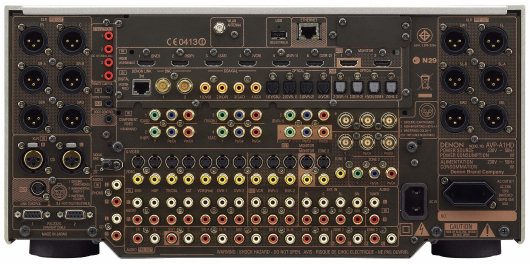
In this part of the guide we go through all current connection types, and explains the function of these features.
Inputs

HDMI inputs
Today most home theater receiver and home theater processors equipped with multiple HDMI inputs. HDMI has leased both HD audio like Dolby TrueHD and DTS HD Master Audio in addition to HD resolution image signal from eg Blu-Ray. See HDMI guide for more information. Equipment which has HDMI is aktulle to connect DVD players, PCs, Blu-Ray players, Playstation 3, Digital terrestrial decoders, cable television decoders and XBOX 360. Antallat HDMI inputs varies from 3 to 7 on models sales today, while discontinued models can have fewer.

Component connections
Component is a pure video connection which offers the ability to send signals up to HDTV format 1080p. The link consists of three RCA jacks. Equipment with component that are relevant to connect f. Older versions of XBOX 360, older DVD players, satellite receivers older. Some costly models are equipped with component BNC connectors.

S-video and composite connections
S-video and composite are the two worst bildetilkoblingene where s-video is the best of them. One should strive to avoid using these connections, but some equipment is not available otherwise. Equipment is appropriate to connect the older DVD players, satellite and cable decoders and old game machines as Playstation 1 and 2.
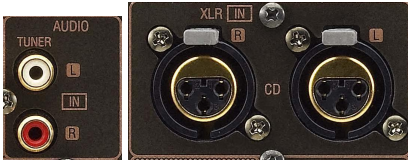
Analog audio connections Analog audio inputs consists of left and right audio. These are used sources such as CD player and tuner. Most receivers are equipped with only rca inputs, but some advanced features also XLR inputs for balanced audio transmission.
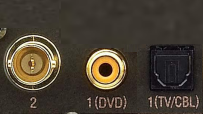
Digital audio connections
There are several forms of digital audio inputs. The most common are optical and coaxial audio input. These can receive conventional PCM digital audio (eg CD) and digital surround formats such as Dolby Digital and DTS. Often these audio inputs possible to assign a particular AV input, while in other cases it is fixed which AV input they belong. For transfer of SACD and DVD-Audio is dependent on HDMI, iLink or Denon link used on some of Denon receivers.

Network Connections
Many new home amplifiers are now equipped with the ability to connect to networks. Most of them have only possibility for wired network, but some also have built-in wireless networking support (Wi-Fi).

USB input
Many home theater amplifiers now have USB input for connecting external hard drive / memory stick or music player that IPhone / IPod. Often amplifiers play music and images from USB, but a few can also play video.
Monitor outputs

HDMI monitor output
HDMI monitor output is output that you use when you connect the amplifier to the TV or projector to transfer the image of the selected signal of the amplifier. Some amplifiers have double monitor output making it possible to connect to both the projector and TV.
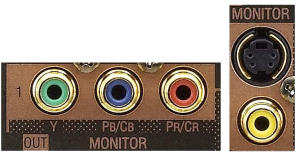
Analog monitor outputs
Most home theater amplifiers are still equipped with analog monitor outputs as component and composite / s-video for those who have old televisions or projectors. These are not recommended if you absolutely should not.
Outputs
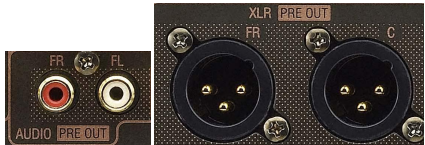
PreOut PreOut is output to connect power amplifier or subwoofer to a home theater amplifier or home theater processor. For home theater processors it is a necessity since these have not built power amplifier while home theater amplifier provides an opportunity to leave parts or all speaker channels run by powerful or better effektforsterk than internal. All home theater amplifiers have minimum one subwooferutang, while the most advanced features preout for all channels.
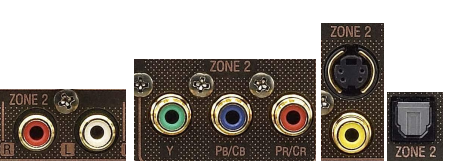
Zone outputs From mid range upwards has many home theater amplifiers opportunity to be sound and image source in several rooms. To achieve this, either vacant power amplifiers internal to the amplifier, or you must use power amplifiers in other zones. There are home amplifiers with up to 4 zones. The most common type of output is RCA connectors for audio, while there are also advanced home amplifiers with video outputs as s-video, component and composite and amplifiers that have digital audio outputs for other zones.

Trigger outputs
Trigger outputs are outputs that can be used to control external equipped. This can for example be to send a signal to a power amplifier used in another zone that it must be turned on.

Remote input / output Some home theater amplifiers are equipped with remote input / output. They allow to control other products via a common remote control / ir eye.
AV-Amplifiers
Forum - last updated topics
- God jul og godt nyttår! ( 1) [ Siste ]
- Høytalerplassering til 7.1 Atmos ( 1) [ Siste ]
- er forumet nedlagt? ( 1) [ Siste ]
- er forumet nedlagt? ( 1) [ Siste ]
- NAD T478, ingen lyd på sub i PCM eller stereo ( 1) [ Siste ]
- Høytalere til HK AVR7000 ( 7) [ Siste ]
- Båndbredde på Monster 400 HDMI kabel? ( 7) [ Siste ]
- Prosjektortips? ( 1) [ Siste ]
- Sony vpl-hw40es ønskes kjøpt ( 1) [ Siste ]
- Sony vpl-hw40es ønskes kjøpt ( 1) [ Siste ]

